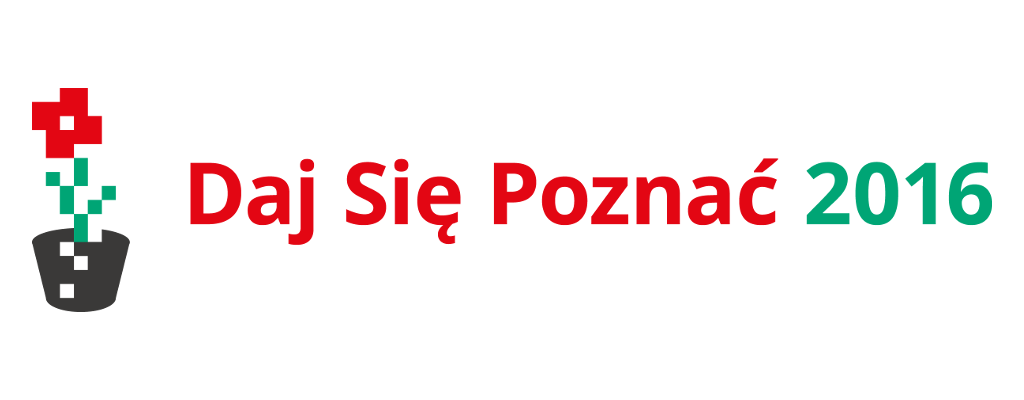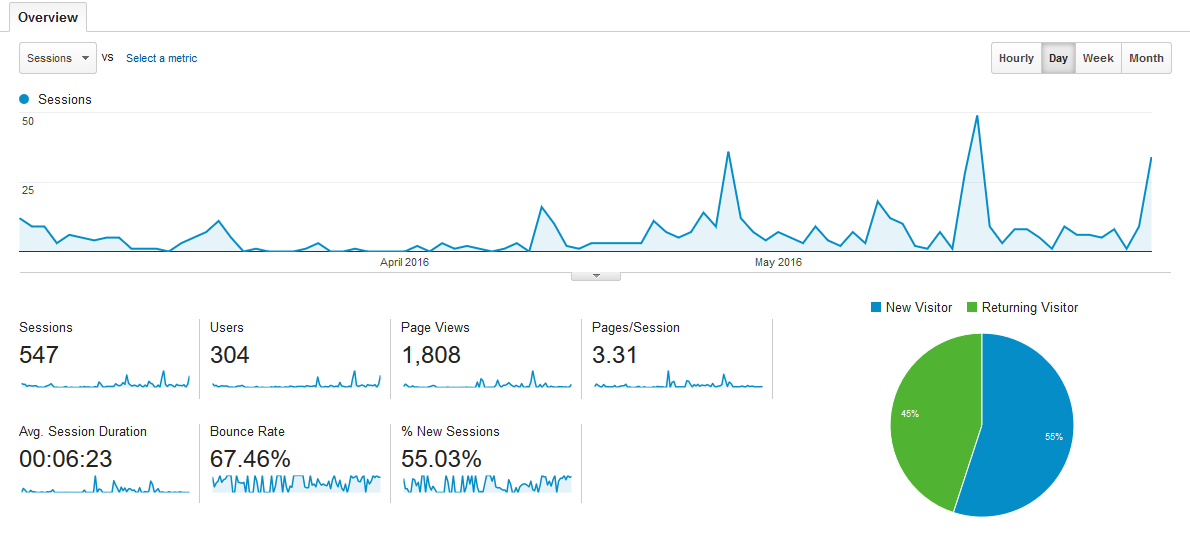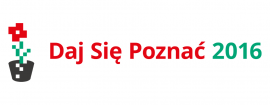“Daj Się Poznać 2016” Competition Summary

Three months later, and the 2016 edition of “Daj się poznać” competition is over. It’s time for some thoughts and a summary.
Some thoughts
As I already predicted in the first post, it is nearly impossible to create 2 quality technical articles per week unless that’s your primary job.
The rules required that you write just anything about your project, but, as you probably noticed, I didn’t want to write about the process itself. Posts like “Hello, I will try this framework first!” and “OMG! That didn’t work, let’s try something else!” are not really interesting and nobody actually cares about that (except the author and maybe a few friends). But if you create a universal article of some value, then you can help others to learn something, and as a bonus, you have your knowledge written down, so you can look it up later.
I chose a path not fully compatible with the one leading to winning this competition, but that’s OK, as I participated just for fun and to discover other interesting projects and people. I don’t really need another chair or a keyboard (the main prizes) as I already have them.
However, if you are reading this just before another edition of this competition and the rules are similar, then you may want to consider some advice on how to complete it successfully:
- Work on very simple project so there is no risk that something will go wrong in the middle of the development
- Even better: use already made project
- Work on something you have to make anyway. This can be a project similar to something you develop in your job or for your master thesis at the university
- Writing in your native language can significantly speed up the process
- Do not use any technology that you don’t already know. There is a risk, that after a few weeks you will realise that it’s a wrong tool, it’s too complicated, limited or have other dependencies and the project will be in jeopardy
- Use high-level languages with lots of ready-made components and libraries, so all you have to do is properly connect them
- Don’t waste your time for making illustrations, screenshots or featured images, they are not important
Maybe I’m a bit too malignant here, so enough of these rants. Some participants actually did it, and not necessarily using such methods. According to the competition organizer, 70 out of 296 registered participants wrote 20 posts (or more) about their projects.
Speaking of other projects, there were some that I intended to track, mostly because… well, I think you can guess why:
- HyperVision rendering engine by Krzysztof Abramowicz
- Cinder climb by Marcin Klimek
- JSDemoScene by Marcin Makowski
- Avocado – PlayStation Emulator by Jakub Czekański
- Orly game engine by Szymon Jankowski
- JustEngine2D by Dmitro Szewczuk
- Volkhvy – crossplatform 3D game engine by Jakub Bentkowski
- RL Engine by Bartłomiej Rogowski
Unfortunately, all of them (except the last one) didn’t make it this time. This doesn’t mean they won’t be continued, so I will keep them in my RSS reader.
If you are here because you wanted to learn how to create a demoscene production or were just curious how this project will end, the good news is, that there is nothing to worry about. The end of this competition doesn’t change anything (well, almost). I will write more about this later. For now, let’s do the summary of what I have already done.
What I have done
Articles tagged as DSP16 (update: I retagged most of them as Demo101):
- “Daj Się Poznać 2016” competition
- Let’s make a demo!
- Tools: choose your weapon wisely
- File structure of a demo
- Anatomy of a demo framework
- Directory structure for a C++ project
- Project setup in Visual Studio
- “Daj Się Poznać 2016” competition summary
You may ask “You were able to write two articles per week during March, why didn’t you just continue that later?”. Well, I scheduled the posts in advance, making the drafts at the beginning of the month. It turned out, that I need more than 2-3 days for one article, so in reality, they were released later than their intended, original date.
Except that, I also did things like:
- continued website development (back-end code, styles, mobile devices support)
- learned a lot about custom post types in WordPress and made two for Books and Projects sections
- wrote a JSON-LD structured data schemas generator. I had to revise it later, as Google also changed their mind about some required fields
- found the “Juliet” flag from “Zrozumieć programowanie” book and wrote a program to find the correct combination of ambiguous symbols
- while we’re at it, I also have found the “November” flag from this book as the 3rd person who actually did this (seems it’s the hardest to find)
- did a review of Revision 2016 PC demo competition
- actually, there’s also a draft of Amiga demo compo review waiting to be published
- read a couple of books
- created a mini ray tracer as a side project
- wrote a review of “Ray Tracing in One Weekend”
- review of “Zrozumieć programowanie” is also half-done and should be available this week
- “Juliet” flag write-up should be ready in the first half of June (update: it will be finished and published later in 2017)
- started to optimize WebGL code for rotating the cube in the header of this site, as loading 400 kB of Three.js library just for that is an overkill
- started to work on JSON support in my 3D scenes converter, as the faces format created by Three Blender plugin is specific to Three.js
- ..and got promoted to Lieutenant General VI (Rank 135) in Battlefield 4 ;)
All of this has been done after hours, so this list doesn’t include my professional activity. Also, maybe if I had focused only on the competition I could have written another 10 articles? Who knows.
Analytics
Looking at the stats it seems that between 1st March 2016 and 31st May 2016 there were 547 sessions of 304 users with total 1808 page views. That’s totally surprising because I didn’t promote this website at all, as it is still under development (well, except posting one article on reddit.com/r/Demoscene). No info for friends on Facebook, Twitter or shameless promotion on Slack during the competition. In fact, this is the first post that I added to Twitter with a #dajsiepoznac hashtag (update: and it even doesn’t show up in the tag search results).

Search queries analysis shows, that majority of people were looking either for my name or for advice on how to prepare directory structure for a C++ project.
What about the project?
I’ll continue to write articles related to graphics programming and the demoscene, and develop this project along the way. Two changes, though. The first is obvious: two technical posts per week are unrealistic, so expect something like one each week (but I cannot guarantee even that).
The second is, that there will be two projects. One with a framework and a separate open-source example demo project that uses it.
Summary (within a summary…)
I would like to thank all the people involved in organising this competition, especially Maciej Aniserowicz. Congratulations to all the participants, no matter if you managed to write 20 posts or not. It’s time to check the list of participant’s websites again, as I’m pretty sure there are even more interesting projects to discover.
And if you are interested in graphics programming or the demoscene, you are more than welcome to visit this website from time to time, as I might have something for you to read or see.

Comments
Comments are automatically closed on articles older than 512 days.